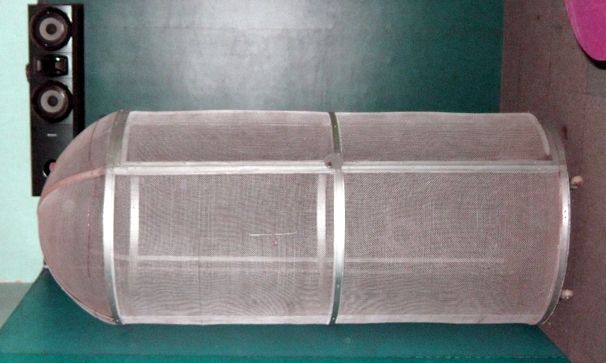How to Troubleshoot a Bad Wi-Fi Connection
I can hear your thoughts loud and clear: you hate wires. Not every wire in the world, but I know that you especially hate the ones that run through your home. That’s why you have opted for a Wi-Fi network, after all. But while this solution appeared to have solved the wires-related problem, it has introduced a new set of problems: poor Wi-Fi signal, random disconnects, and so on.
So how do you troubleshoot a bad Wi-Fi connection? Read on to learn all there is to know about this topic.
First of all, it is important to understand that your home hates Wi-Fi signals. Most homes were built many years ago, and they weren’t built with wireless Internet connections in mind. In fact, most people build modern houses without even thinking about Wi-Fi connections today. And why would they do that? You can always put a router in the living room and that’d be it, right?
The reality is a bit different. Your home may contain steel bars, a lot of concrete, lots of wires and metal pipes that are a part of the air conditioning system, electrical wiring, and so on. And each and every one of them has the potential of slowing down your network. Not only that, but some of the houses are built in such a way that their metal structure creates a Faraday cage, which can successfully block pretty much any radio wave, including the… you’ve guess it – Wi-Fi signal.

Often times, the solution is to reposition the router. So grab a 50 feet power cord, and then start moving the router around the house, a feet at a time. Use an Internet connection speed test service and check the speed after each router move. Sometimes you will be able to find locations that almost double the Internet speed.
The router repositioning may have brought some improvements, but we aren’t stopping here. Similar problems can be caused by interference with other appliances and devices, be them yours or your neighbors’ devices.
Who likes to tweak router settings all the time? Just a few of the skilled IT professionals would be eager to do that, if you ask me. Still, it is important to try and set a different Wi-Fi channel from within your router’s settings; since very few people choose to tweak their routers, you may end up discovering a channel that’s entirely yours, and this will significantly boost your Wi-Fi signal. Tools like inSSIDer 4 can make your live much easier, because they can also offer channel recommendations, for example.
If these two steps haven’t brought significant improvements, it’s time for a solution that never fails: a high gain SMA antenna. Your router has antennas with limited gain, in order to keep the costs down. With a dedicated antenna, the Wi-Fi signal should be significantly boosted.

Make sure that your antenna is elevated; Wi-Fi signal travels much easier downwards. And since the signal can easily pass through wood, for example, you can place the antenna on the top of a dresser.
If everything fails, you should invest in a repeater, which is nothing more than a Wi-Fi signal amplifier. It’s just like a second router who picks up the signal from the first router, amplifies it, and then emits it, thus successfully covering another area in your home.
Believe it or not, when it comes to Wi-Fi, there are new technologies that can also make our lives harder, rather than making it easier. People have invented Wi-Fi blocking paint, for example, but hopefully your neighbors aren’t using it.
Computer News
1. Serious games (the games that are used in education, simulations, training, etc) become more and more important and a lot of money is invested in this direction. Statistics say that the finances invested in this industry will surely triple until 2015.
A recent study has showed that math games are much more efficient tools when compared to solving identical math problems on paper. This was considered an important message sent to colleges, universities and schools worldwide. Math games seem more motivating and manage to engage children in a more successful way.
The US army is already using games in order to attract recruits and also teach them different skills. Also, in many organizations computer games are used in order to train the staff. There are more serious games used in education and it has been proved that kids may learn a lot while playing educational games.
2. The new generation of video games seems to boost the physical activity in kids; this is the latest news provided by the researchers in the field. It appears that the electronic games do have this positive impact indeed, and this is surely a change for the good, knowing the fact that in developed countries, a kid spends about two hours a day in front of a computer / tablet screen.
The old video games were making kids sedentary, but it looks like the new generation is going to change this for good. The differences in kids’ behavior are still small and may seem to be lacking importance, at least for now, but it is a well known fact that every minute which is taken from watching TV and added to doing any kind of physical activity is important.
3. People like to create avatars that represent them, but it looks like this may influence the actual perceptions of the real person. A research that demonstrates this was presented at the 2013 annual conference on Human Factors in Computing Systems.
Students were asked to evaluate some hills. The ones that were allowed to customize their avatars with a backpack changed their perception on the virtual environment. One of the conclusions was that, for example, people with disabilities feel better if they are given the opportunity to customize their avatars.
Soldiers that have the ability to create their own avatars have the opportunity to show other how they perceive their real conditions. Basically, the study has discovered that when you customize your avatar, you identify with the avatar, and thus you transmit a lot of useful information about yourself.
4. For many people that are fighting with obesity, there are several barriers that come in their way to success. For some of them, even a simple face to face talk can be a problem; for others it is losing anonymity and the list can go on. The Journal of Nutrition, Education and Behavior has published a recent study, during which scientists wanted to explore alternative weight management methods. The goal was to eliminate the barriers that many of the patients may have.
One of the explored directions was virtual reality. It turns out that after six months, virtual reality has proved to be successful in maintaining a healthy weight. The program used a web based virtual reality game named Second Life.
5. How long has passed since you have played Tetris? A new research has demonstrated the positive impact of playing Tetris on lazy adults’ eyes. Lazy eye is the common name for amblyopia. The game manages to make both eyes work together, cooperating, and this increases the plasticity in the brain. The results of the study have been published in a recent number of Current Biology. Ambyopia is affecting 3 percent of the population, and it is caused by poor brain processing speed.
Tech News
1. A computer game is used by scientists to encourage creativity in design, using architecture to teach geometry and math. A group of researchers from the Florida State University College of Education have created “Earthquake Rebuilt”, using funds received as an award from the National Science Foundation.
The game targets pupils in the middle school which will be asked to build a village after an earthquake. Every player should consider various architectural principles like symmetry and balance. Colors and shapes can also be chosen from quite a wide range of options.
One of the game creators said that this project represents an architect’s daily routine. The creators hope that the game will be liked by all categories of persons, be them Lego lovers or not. The game is considered by the critics as a very interesting one, considering the fact that while playing the game, the players have the possibility of also learning a lot. It is known that if the children are not engaged in interesting projects, they can easily lose any interest in learning. When the game will be finished, it will be an open source game, and playing it will be free as well.
2. All the information that people give away on the internet is used in order to predict the user’s age, gender and personality traits. Researchers from Pennsylvania University want to see if the analysis of the language used by persons on the net can also provide other types of information related to their personality.
During a recent study, more than 70.000 persons completed a set of questions from a Facebook questionnaire and the researchers tried to come with some conclusions. Based on the data that they have used, these specialists created computer models capable of predicting the age, gender and the personality traits of the subjects.
3. Gaming in virtual realities will never be the same, due to a new and revolutionizing device. Virtualizer is the name of the device invented by a group of scientists from the Vienna University of Technology. The device is worn on the head and it provides 3D images, thus letting the player wander around in the computer generated world.
It might appear to be old news, but the reality is that there has not yet been invented a device that allows persons to walk into the virtual world without hitting the real walls of the room. The Virtualizer is considered to offer an almost natural walk in virtual spaces: the player’s feet glide across a low friction surface while he is tied with a belt to a frame. The creators hope that the device will be available for the masses starting with 2014.
4. A new computer mediated wheel steering system will soon be presented at the Hilton San Diego Bayfront Hotel. It is known that the sudden turns are very dangerous and difficult to make using the actual steering techniques, but the computer mediated steering system allows the drivers to steer without having to resort to the hand over hand fumbling. This device is allowing the driver to keep the hands in the same position while steering the wheels. A computer will be responsible for recording the degree to which the device is turned, the speed at which it is turned and the speed of the vehicle. The same computer will calculate how far the wheels in the front should be turned and turn them using an electric motor. A lot of studies and experiments still need to be done before releasing the new system on the market, of course.
5. Tablet computers are now used by patients that want to inform the hospitals about their health status. Patients in Trondheim are actually testing the current version of the program on a tablet, using a special app developed by SINTEF. The goal is to create a closer communication with the patients, in order to understand better each case and thus prevent the disease from getting worse.
Using the app, the patients send a daily report to the hospital, in which they describe how they feel. It is known that COPD patients require repeated hospitalizations and due to this new and improved system, the hospital can manage better all these situations.
